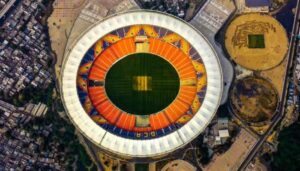Covid-19 pandemic was not bad for all! Not only the health sector but e-commerce and digital transactions witnessed a humongous growth, particularly in the last two years. Buy now, pay later (also known as BNPL) adoption has grown rapidly during the Covid period. It is now regarded as an alternative to credit cards. According to Goldman Sachs, it is set to become the fastest-growing online payment method, from a 3 per cent share in 2020 to 9 per cent in 2024.
What is Buy now pay later (BNPL)?
Buy now pay later (BNPL) is emerging as India’s fastest-growing e-commerce online payment. It works somewhat similar to credit cards, allowing borrowers to keep buying the stuff they need and pay at a later date.
How does the ‘buy now, pay later model work?
This concept is not new. In fact, it is the digital version of the age-old concept of the Khaata system, wherein customers would pay the entire bill in one go, typically, instead of paying every time they make a purchase. The Khaata system remains a common practice in small towns and rural areas.
BPNL enables customers to enjoy a seamless buying experience. Users can order food, groceries, medicines, etc., from hyperlocal merchants, etc., using the ‘buy now, pay later’ platform, and just pay the collated amount, later.
Say, you are doing online shopping and are proceeding towards the checkout. The retailer offers you the option to receive the product(s) right away but pay for it in full only after, say, 30 days or in smaller instalments over time.
Third-party lenders (mostly NBFCs or fintech), also called BNPL providers, partner with the retailer and integrate their lending services into the checkout process. So, you’re essentially granted a mini-loan at the point of sale itself. The customers can choose from a variety of repayment terms (sometimes even no-cost EMI) that best suit their budget and make those payments overtime on either the provider’s website or app.
Difference between credit cards and BPNL
If you have a credit card, you have to pay at least the minimum amount due at the end of the month. However, with buy now, pay later, you might have a three-, five- or 12-month option. This means that while BNPL can offer more flexible terms
BNPL interest rates and fees vary widely. Some options carry no interest or fees at all, which essentially makes it free financing for the consumer.
BNPL: A popular trend among the millennials
India is home to one of the world’s largest millennials. BNPL is a fast and convenient option for all these consumers. The registration process is simple and can be initiated and completed during checkout on e-commerce sites. Customers receive real-time approval and don’t have to deal with cumbersome paperwork.









Unified Pension Scheme (UPS): How it differs from NPS and OPS
RBI to lenders: Stop charging compound penal interest on loans
Income Tax Return (ITR) filing: What happens if you fail to do so